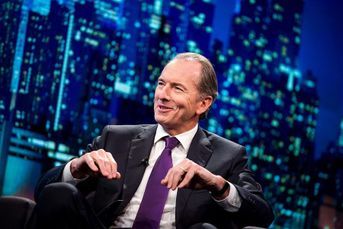Plans’ lack of target date savvy presents opportunity
Many plan sponsors aren't focused on the investment strategies behind target date funds, creating an opportunity for financial advisers to play a greater role in the retirement-planning process, according to a survey by JPMorgan Asset Management Inc. of New York.
Many plan sponsors aren’t focused on the investment strategies behind target date funds, creating an opportunity for financial advisers to play a greater role in the retirement-planning process, according to a survey by JPMorgan Asset Management Inc. of New York.
The New York-based firm worked with Harris Interactive Inc. of Rochester, N.Y., in October to survey 168 advisers who were involved with selling or servicing defined contribution plans and recommending or monitoring target date funds as part of their practices. According to the advisers surveyed, plan sponsors are struggling with how to evaluate target date funds.
The funds, designed to be a one-stop retirement investment, are created with an allocation of stock and bonds that becomes more conservative as the investor nears retirement age.
Just 24% of the advisers said that they thought that plan sponsors recognized the differences in the way the funds reallocated assets as the target date neared, often called the “glide path.” And just 26% said that plan sponsors frequently or always had clear evaluation criteria.
AIMING LOW
Although 77% of advisers said that plan sponsors started with a plan’s goals and objectives in mind, they often defaulted to the lowest-cost option or whatever fund the record keeper recommended, the survey found.
Of those surveyed, 79% said that they thought that plan sponsors always/frequently or sometimes chose the lowest-fee option. And 81% of advisers said that they thought that the plan sponsors were always/frequently or sometimes guided by the record keeper’s recommendation.
“In a market like this, high fees can eat away at the retirement savings,” said David Musto, managing director of investment-only retirement of JPMorgan Asset Management. “But what gets missed is that target date funds have very different styles, management focus, diversification and levels of risk.”
The firm conducted the survey after launching a target date fund evaluation program for its advisers.
Costs are important to plan sponsors, said Phil Carrasco, a wealth adviser with Cornerstone Wealth Management Group of Hagerstown, Md., which manages $150 million in assets.
“They also look at past performance, but the choice is often embedded in the plan,” he said. “They may rely on me to recommend one of the many 401(k) providers.”
Those surveyed ranked diversification as the most important criterion that plan sponsors should use in fund selection, with 77% citing it as extremely or very important. A full 67% said that managing volatility in the five to 10 years prior to the investor’s retirement was extremely or very important.
Many employers don’t have the staff or time to evaluate the choices, some advisers said.
“I think, particularly with smaller companies, the objective in having a qualified plan is that they have to do it to be competitive [with other small companies]” said Charles Stanley, investment adviser with Oncubic LLC, a San Diego firm that manages $500 million in assets.
“The employer wants to have something decent, but really [doesn’t] want to waste time with it,” he said. “Consequently, they don’t, and they don’t know much about the funds.”
As a result, they rely heavily on advisers to conduct the research and due diligence.
“We actually are forcing them through the process of creating a good investment policy statement,” Mr. Stanley said.
“There are expectations and liabilities that exist for trustees for these plans, but many of them don’t meet the criteria of fiduciary responsibility,” he said. “It underscores the need for fiduciary advisers.”
Other advisers agree that plan sponsors aren’t paying attention to the strategies behind the funds, and that lack of information could mean limited options for employees.
“The participants may end up picking a fund that is too conservative when they retire, and yet they are still facing many years of rising costs,” said Ted Toal, senior partner at Triton Wealth Management LLC of Annapolis, Md., which manages $90 million in assets. “Most people are working within the old rules of investment and are focused only on protecting the principal.”
When talking with employees, Mr. Toal said, the firm recommends that they select funds that have dates extending beyond their target date of retirement.
“We see it every day, plans with variable annuities, for example, with fees that are astronomical,” he said. “Unfortunately, the sponsor is not researching it.”
Plan sponsors need a documented process, Mr. Musto said.
“There is an opportunity for advisers to understand the differences among the funds in performance and volatility. Advisers are well-positioned to help the investment committees with information,” Mr. Musto said.
“Another area is participant education and support,” he said. “You don’t want to see the participants panic and make changes that they will regret when the market turns around.”
E-mail Sue Asci at [email protected].
Learn more about reprints and licensing for this article.








